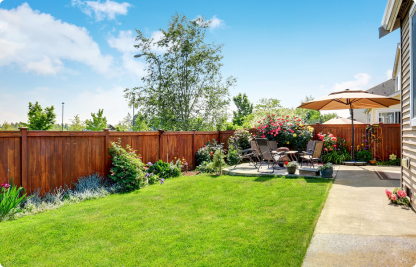
It’s time for a story. Once upon a time there was a person who stared at the fading paint on their walls and thought, “I can do better.”
So off they went to visit tens of different shops and collect hundreds of colour swatches. They sat down and stared for hours at the stacked swatches and agonised over whether misty sky blue or summer sky blue would look better on the feature wall.
Finally, after many litres of coffee, they manage to whittle it down to a select bundle and then proceed to test each and every one of them upon the walls. By the time this in-depth experiment is over their living room looks like a four-wall performance of Joseph and the Amazing Technicolour Dreamcoat.
But let’s fast forward through planning and brainstorming and testing and effort.
Their mind is made up.
Their colours are perfect and the colour scheme sublime. But standing there, blank wall staring them in the face, they know their painting skills have to live up to the idyllic ideas in their head.
So, no pressure. Right?
Well, never fear! Stewart Timber is here with our Five Tips for Perfect Painting. So, if you could be the main character in our little store, read on and get your paint brushes ready!
1. Sand Away the Bumps
Paint loves a smooth surface.
If you jump right in to painting without sanding down the surface, your perfectly painted walls will end up speckled with lumps and bumps and dots and dimples from the joints, nails and spackle underneath.
To avoid a bumpy wall, sand your walls from skirting board to ceiling with a fine or very fine grit sand paper. To reach the higher bits you’ll need a sanding pole. If you don’t have one, a ladder works just as well!
When you’re finished remember to wipe down the walls to get all the excess dust off.
2. Degrease
Paint doesn’t like grease and simply won’t bond it it. If you do paint over grease, the paint will dry and then flake off the wall.To prevent a patchy paint job, pick up a strong degreaser and scrub the walls until just the paint remains.
Be careful with degreaser. It’s often pretty harmful so rubber gloves and safety specs are a must.
3. Canvas Covers
The pros don’t use old bedsheets for a reason: they simply aren’t thick enough and the paint will bleed through. Pick up some heavy canvas covers that will catch stray drips of paint and keep your floors and carpets paint free.
4. Prep Your Rollers
This one is a two-parter. Firstly, don’t buy cheap roller covers. It’s a false economy. Yes, you can find five covers for a quid but that doesn’t mean you should buy them. They’re usually made from dreadful material that will start shedding at the first possible opportunity.
And shedding rollers means furry walls!
Secondly, even the best covers come with a little bit of fuzzy dust on them. Before you use them, give them a good wash with some warm soapy water. Run your hands up and down the covers to pull off any loose fibres.
Once you’ve washed them, they’re good to go.
5. Slosh Your Brushes
Sloshing is simply washing your brushes in your cleaning solvent before you start. This conditions the brushes’ bristles and helps de-clump them. When you’ve finished painting, your brushes will be much easier to clean.
And yes, de-clump is a technical term and not made up.
So, that’s our Five Tips for Perfect Painting. Now you’ve got no excuse not to re-do the living room or spruce up the kitchen!
We love to see what our customers are getting up to so, if you’ve got any work going on in the garden or inside, let us know on Facebook or Twitter.



